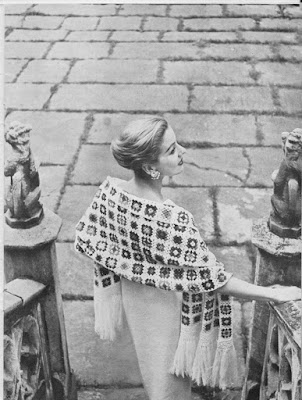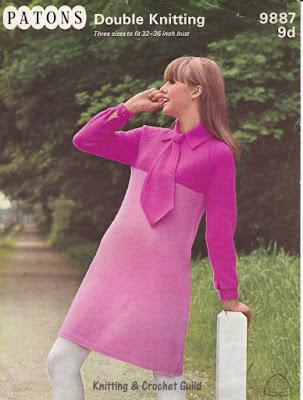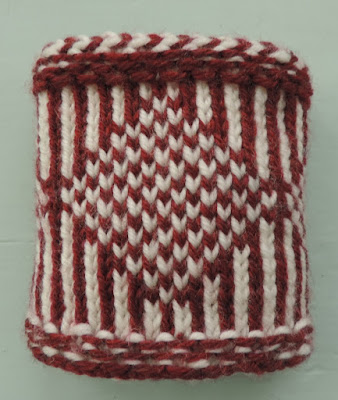Roz's mother had a collection of stocking mending threads, in a very nice little basket. I was impressed by the number of different shades of light brown, as well as a pale blue and a pink. (The photo doesn't show the entire contents of the basket, by the way - there were several other spools of thread in it.)
Roz thought that the basket might have belonged to her grandmother originally. It has certainly been a long time since stocking-mending was an important part of looking after your appearance - and silk stockings haven't been everyday wear for women since before the Second World War.
The strange object that was in the basket along with the mending threads is called a 'Speedweve'.
We couldn't guess what it was for, but Tom of Holland has one that came with the original instructions, and has very helpfully written a blog post on how to use it. It's a very clever gadget!
Roz also found a Stocking Ladder Darner - a tiny latchet hook, still in its packaging. (Critchley Bros. made Wimberdar brand knitting needles and needle gauges, too.)
And a few things that are nothing to do with mending stockings, including a 'War Time Pack' of snap fasteners.
The message on the back of one strip reads: 'These Snap Fasteners are of pre-war quality. The card ONLY is "austerity" in size and style.'
And I especially liked a box of Cash's Woven Initials:
Cash's Woven Name Tapes and Initials have been made for a very long time: I had a set of name tapes when I went to secondary school and every item of clothing was supposed to have a name tape on it. (They were inspected at the start of every academic year.) My sister had a set too, and so did my daughter, and you can still get them. The roll of 'M.W.' tape that Roz's mother had seems unused - and Roz couldn't think of any family member with those initials, so it's a bit of a mystery.
Other sides of the box advertise more Cash's products:






















